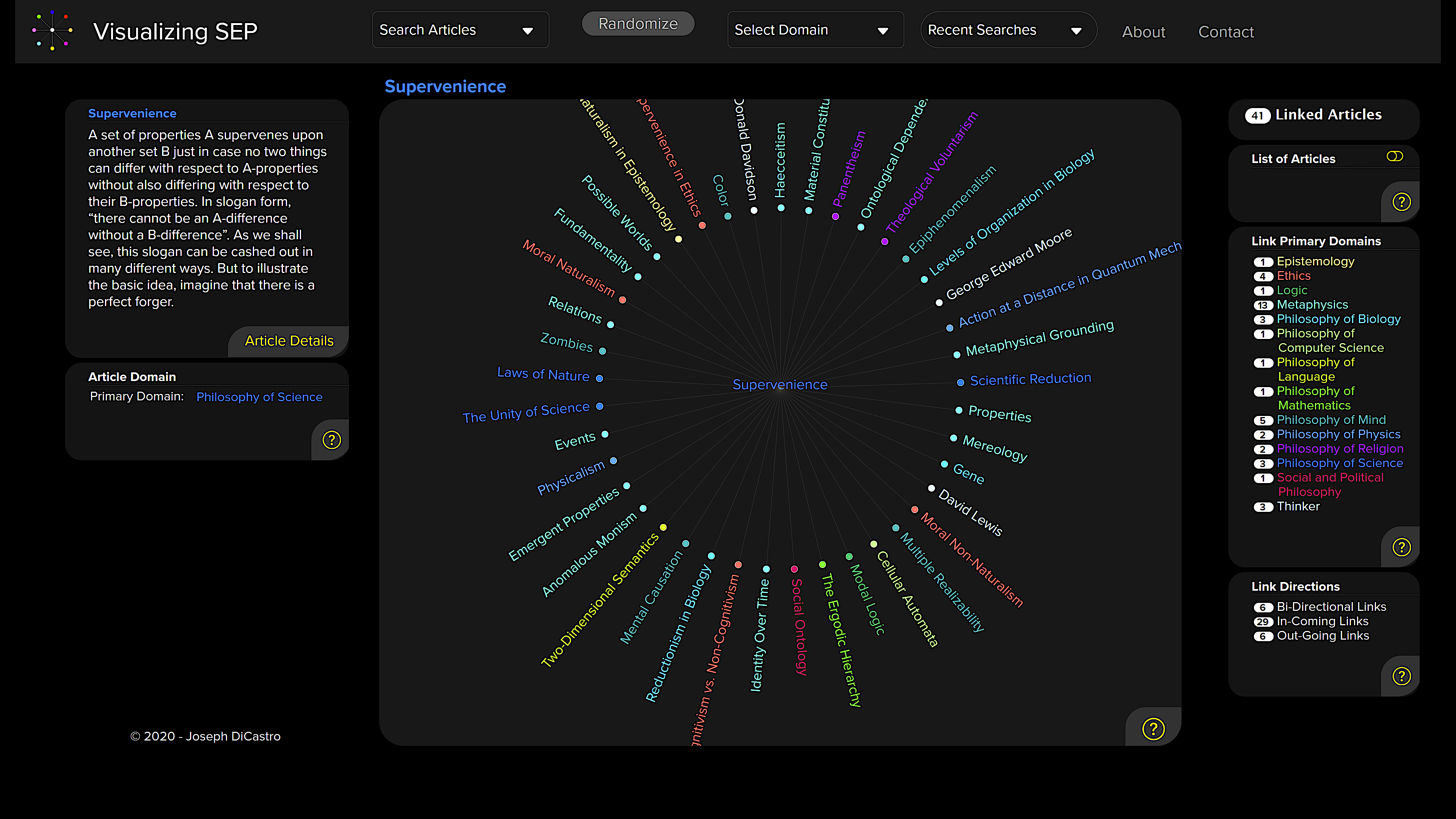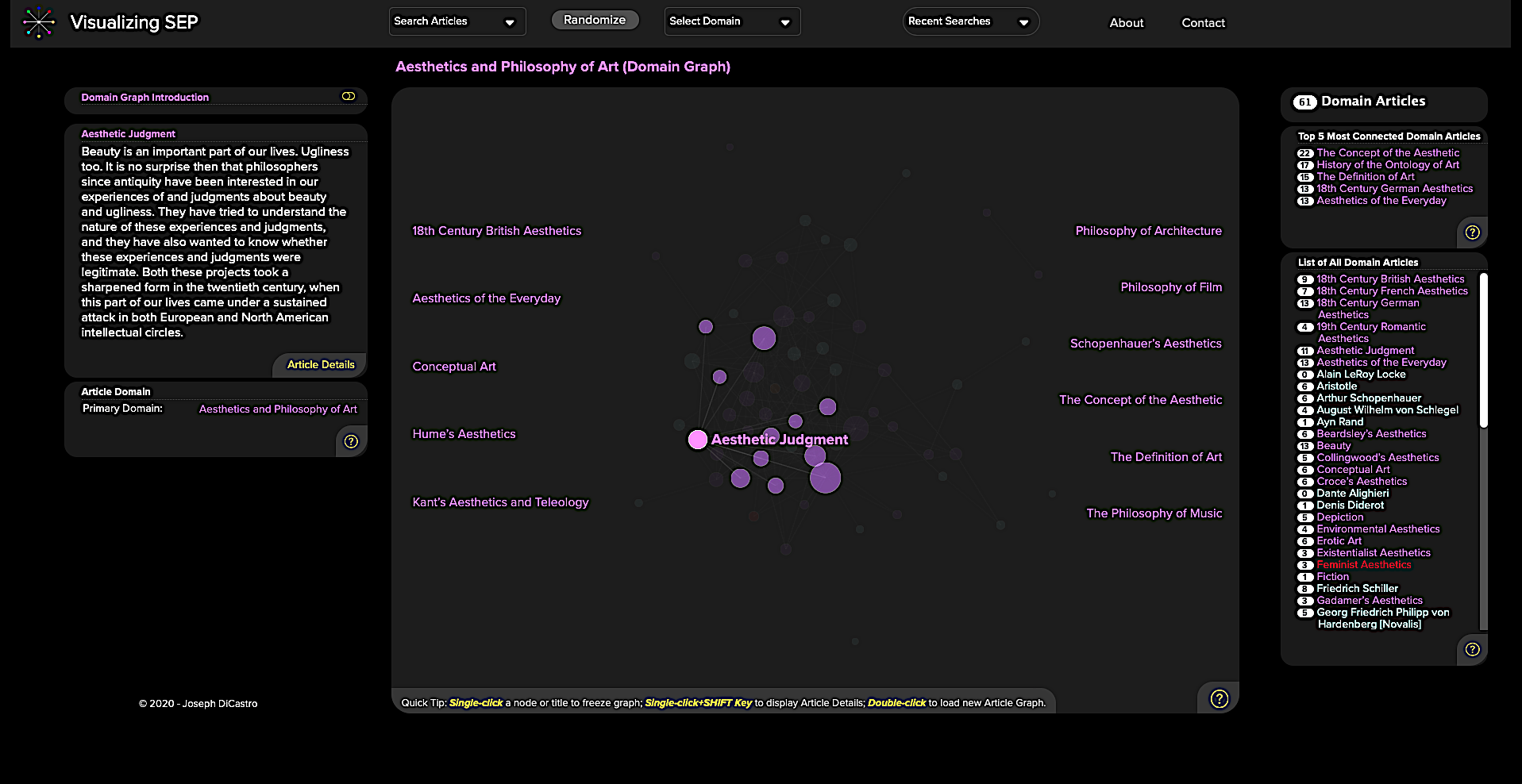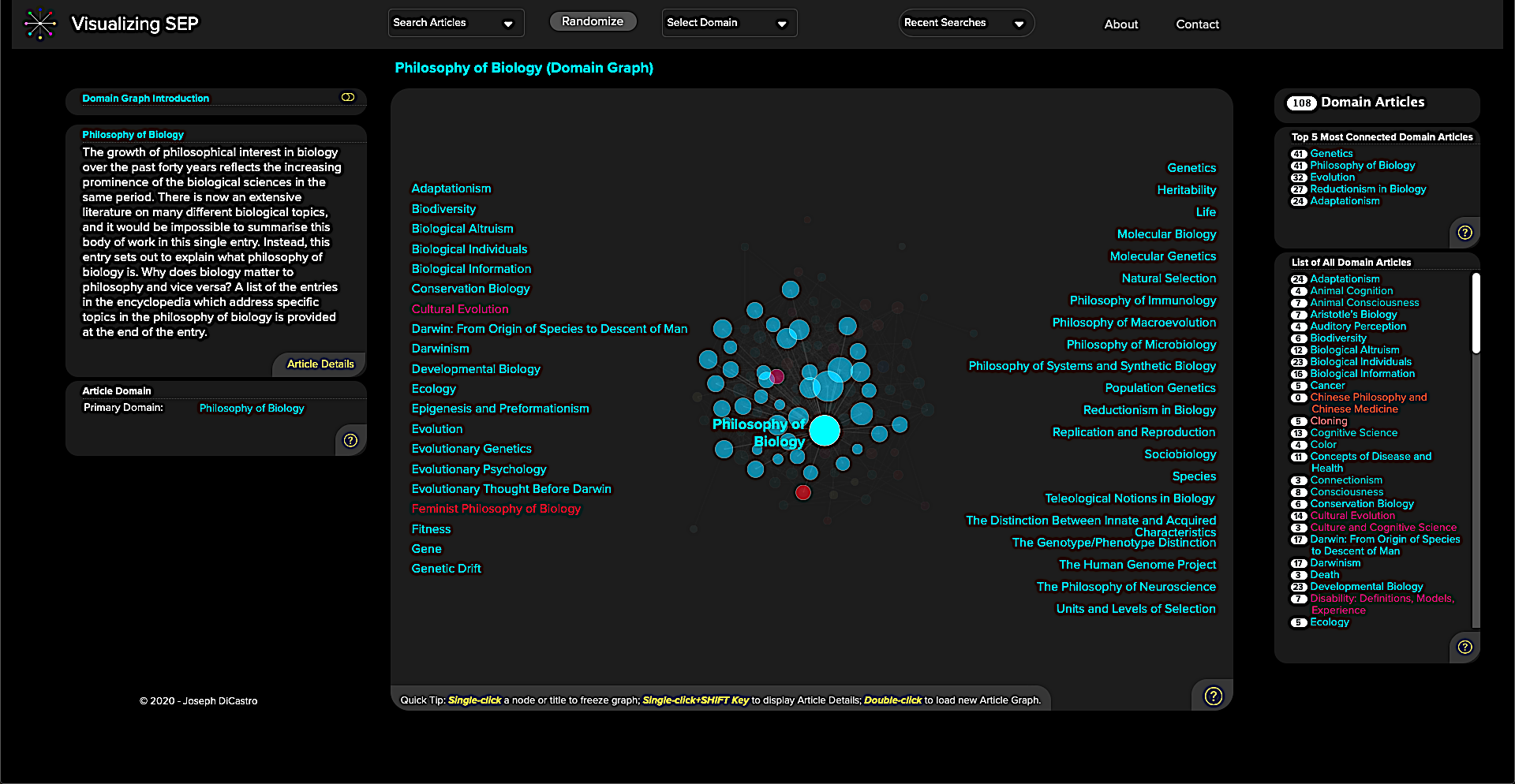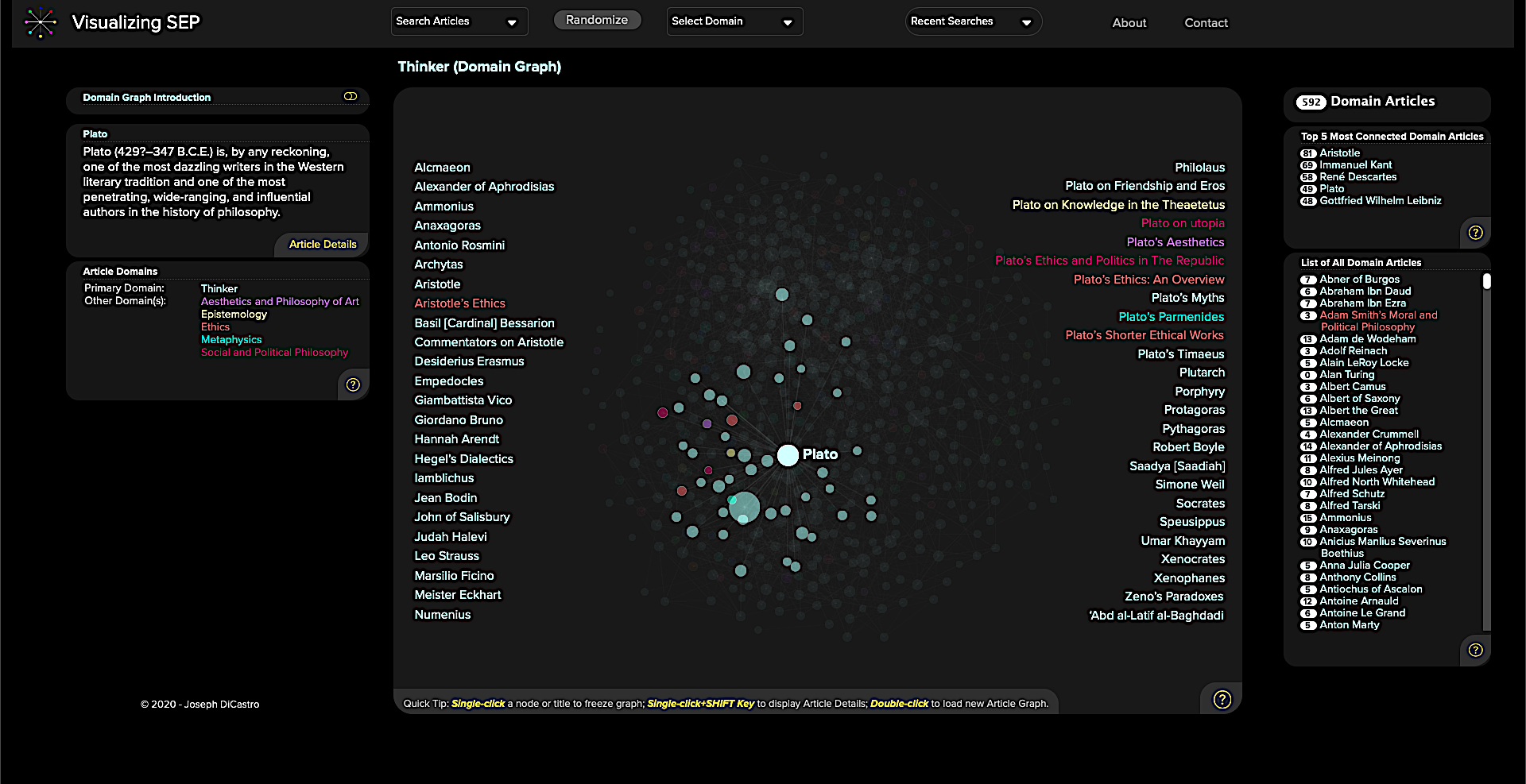[Most Recent Entries] [Calendar View]
Wednesday, May 19th, 2021
| Time | Event |
| 1:03a | Flash Sale: Get 75% Off Udacity’s Online Courses
A quick FYI: Udacity is running a 75% off flash sale through May 25. Founded by computer scientist and entrepreneur Sebastian Thrun, Udacity partners with leading tech companies and offers an array of courses (and Nanodegree programs) in data science, cyber security, machine learning, artificial intelligence, cloud computing, and autonomous systems. To get the 75% off discount, click here and select a course/program. The discount should be applied automatically. But in case you have any problems, you could always use the code SAVE75 at checkout. Note: Open Culture has a partnership with Udacity. If readers enroll in certain Udacity courses and programs, it helps support Open Culture. Related Content: For a complete list of online courses, please visit our complete collection, 1,700 Free Online Courses from Top Universities. For a list of online certificate programs, visit 200 Online Certificate & Microcredential Programs from Leading Universities & Companies, which features programs from our partners Coursera, Udacity, FutureLearn and edX. And if you’re interested in Online Mini-Masters and Master’s Degrees programs from universities, see our collection: Online Degrees & Mini Degrees: Explore Masters, Mini Masters, Bachelors & Mini Bachelors from Top Universities.
Flash Sale: Get 75% Off Udacity’s Online Courses is a post from: Open Culture. Follow us on Facebook and Twitter, or get our Daily Email. And don't miss our big collections of Free Online Courses, Free Online Movies, Free eBooks, Free Audio Books, Free Foreign Language Lessons, and MOOCs. |
| 8:00a | What Karl Marx Meant by “Alienation”: Two Animated Videos Explain A common political distortion claims that socialists are lazy and want to live off other people’s labor. Never mind that this description best applies to those who do not work but live off rents, dividends, and tax breaks. A bigger problem with the idea lies in its definition of “work,” conflating labor-for-hire with labor for a purpose. In Karl Marx’s theories, work occupies a central position as a human value. We all want to work, he thought. We are not born, however, wanting to maximize shareholder value. Marx believed that “work, at its best, is what makes us human,” X-Files star Gillian Anderson tells us in the BBC Radio 4 animation above. “‘It fulfills our species essence,’ as he put it. Work allows us “to live, to be creative, to flourish.” Work in the industrial 19th century, however, did nothing of the kind. You only need to imagine for a moment the soot-filled factories, child labor, complete lack of worker protections and benefits to see the kinds of conditions to which Marx wrote in response. “Work,” says Anderson, in brief, “destroyed workers.” Under capitalism, Marx maintained, workers are “alienated” from their labor, a concept that does not just mean emotionally depressed or creatively unfulfilled. As early as 1844, over twenty years before the first volume of Capital appeared, Marx would elaborate the concept of “estranged labor” in an essay of the same name:
In an economy where things matter more than people, people become devalued things: the “realization of labor appears as loss of realization for the workers; objectification as loss of the object and bondage to it; appropriation as estrangement, as alienation.” Workers are not only spiritually dissatisfied under capitalism, they are alienated from the fruit of their labor “to the point of starving to death.” To be an alienated worker means to be literally kept from things one needs to live. This is the kind of work Marxists and socialists have opposed, that which grossly enriches a few at the expense of most everyone else. Whether or not we are content with Marxist solutions or feel a need for new theories, every serious student of history, economy, and culture has to come to grips with Marx’s formidable critiques. In the video above, Alain de Botton’s School of Life, a self-described “pro-Capitalist institution,” attempts to do so in ten minutes or less. “Most people agree that we need to improve our economic system somehow,” says de Botton. “It threatens our planet through excessive consumption, distracts us with irrelevant advertising, leaves people hungry and without healthcare, and fuels unnecessary wars.” It perpetuates, in other words, profound alienation on a massive scale. Of course it does, Marx might respond. That’s exactly what the system is designed to do. Or as he actually wrote, “the only wheels which political economy sets in motion are greed, and the war amongst the greedy — competition.” Related Content: Marxism by Raymond Geuss: A Free Online Course A Short Animated Introduction to Karl Marx 5 Free Online Courses on Marx’s Capital from Prof. David Harvey Josh Jones is a writer and musician based in Durham, NC. Follow him at @jdmagness What Karl Marx Meant by “Alienation”: Two Animated Videos Explain is a post from: Open Culture. Follow us on Facebook and Twitter, or get our Daily Email. And don't miss our big collections of Free Online Courses, Free Online Movies, Free eBooks, Free Audio Books, Free Foreign Language Lessons, and MOOCs. |
| 11:00a | The Largest Free Kitchen in the World: Discover India’s Golden Temple Which Serves 100,000 Free Meals Per Day If you find yourself hungry in Amritsar, a major city in the Indian state of Punjab, you could do worse than stopping into the Golden Temple, the largest Sikh house of worship in the world. It thus also operates the largest community kitchen, or langar, in the world, which serves more than 100,000 free meals a day, 24 hours a day. Anyone familiar with Sikhism knows that, for its believers, serving food to the hungry constitutes an essential duty: not just to the poor, and certainly not just to fellow Sikhs, but to all comers. Wherever in the world you may live, if there’s a Sikh temple or shrine in the vicinity, there’s quite possibly a langar you can visit as well. Of course, no other langar matches the scale of the Golden Temple’s. As explained in the Food Insider video above, it operates with a permanent staff of 300 to 350 employees as well as a large number of volunteers, all of whom work in concert with machines around the clock to produce an unending stream of vegetarian meals, which include daal lentil stew and chapati bread. There’s always been a market for free food, but recent years have seen increases in demand great enough to necessitate the construction of additional dining halls, and total operating expenses come to the equivalent of some US$4 million per year. (Every day, $5,000 goes to ghee, or Indian clarified butter, alone.) Apart from the people of Amritsar and pilgrimage-making devotees, the Golden Temple langar has also drawn the attention of culinarily minded travelers. Take the Canadian Youtuber Trevor James, better known as the Food Ranger, to whose taste for extreme scale and quantity the operation no doubt appeals. His visit also affords him the opportunity, before his meal, to be outfitted in traditional dress, up to and including a Sikh turban. (The Golden Temple requires its diners to wear a head-covering of some kind.) James’ stock of travel-vlogger superlatives is nearly exhausted by the splendor of the temple itself before he steps into the kitchen to observe (and even lend a hand in) the cooking process. “Look at this,” he exclaims upon taking his seat on the floor of the hall with a tray of his own. “This is an almost spiritual meal” — an aura exuded whether you believe in Waheguru, the gods of street food, or anything else besides. Related Content: Introduction to Indian Philosophy: A Free Online Course Al Jazeera Travel Show Explores World Cities Through Their Street Food Based in Seoul, Colin Marshall writes and broadcasts on cities, language, and culture. His projects include the Substack newsletter Books on Cities, the book The Stateless City: a Walk through 21st-Century Los Angeles and the video series The City in Cinema. Follow him on Twitter at @colinmarshall or on Facebook. The Largest Free Kitchen in the World: Discover India’s Golden Temple Which Serves 100,000 Free Meals Per Day is a post from: Open Culture. Follow us on Facebook and Twitter, or get our Daily Email. And don't miss our big collections of Free Online Courses, Free Online Movies, Free eBooks, Free Audio Books, Free Foreign Language Lessons, and MOOCs. |
| 2:00p | The Surprising Reason Why Chinatowns Worldwide Share the Same Aesthetic, and How It All Started with the 1906 San Francisco Earthquake Anti-Chinese racism runs deep in American culture and law, beginning in the 19th century as competition intensified in California gold and land rushes. Chinese immigrants were pushed into teeming cities, then denigrated for surviving in overcrowded slums. To get a sense of the scope of the prejudice, we need only consider the 1882 law known as the Chinese Exclusion Act — the only legislation passed to explicitly restrict immigration by one ethnic or national group. The law actually goes back to 1875, when the Page Act banned Chinese women from immigrating. It was only repealed in 1943. Although routinely evaded, the severe restrictions and outright bans on Chinese immigration under the Exclusion Act drove and were driven by racist ideas still visible today in tropes of dangerous, exoticized “dragon ladies” or sexually submissive concubines: roles given in early Hollywood films to the first Chinese-American movie star, Anna May Wong, who, after 1909 — despite being the most recognizable Chinese-American in the world — had to carry identification at all times to prove her legal status. Wong was born in Los Angeles, a city that — like every other major metropolis — became home to its own Chinatown, and a famous one at that. But the most famous of the segregated urban areas originated in San Francisco, after the 1906 earthquake that nearly leveled the city and “came on the heels of decades of violence and racist laws targeting Chinese communities in the US,” notes Vox. “The earthquake devastated Chinatown. But in the destruction, San Francisco’s Chinese businessmen had an idea for a fresh start” that would define the look of Chinatowns worldwide. The new Chinatown was more than a new start; it was survival. As often happens after disasters, proposals for relocating the unpopular immigrant neighborhood appeared “before the dust had settled and smoke cleared,” notes 99 Percent Invisible. “The city’s mayor commissioned architect and urban designer Daniel Burnham to draw up plans aligned with the City Beautiful movement.” Feeling they had to cater to white American stereotypes to gain acceptance, Chinese-American business leaders “hired architect T. Paterson Ross and engineer A.W. Burgren to rebuild—even though neither man had been to China.” The architects “relied on centuries-old images, primarily of religious vernacular, to develop the look of the new Chinatown,” and the result was to create a genuine tourist attraction — an “iconic look,” the Vox Missing Chapter video explains, that bears little resemblance to actual Chinese cities. The Chinese immigrant community in San Francisco “kept their culture alive by inventing a new one,” a deliberate co-optation of Orientalist stereotypes for a city, its merchants decided, that would be built of “veritable fairy palaces.” The New Chinatown was “not quite Chinese, not quite American”; safe for middle-class tourism and consumption and safer for Chinese businesses to flourish. The model spread rapidly. Now, in whatever major city we might might visit — outside of China, that is — the Chinatown we encounter is both a unique cultural hybrid and a marketing triumph that offered a measure of protection to beleaguered Chinese immigrant communities around the world. Related Content: Learn the Untold History of the Chinese Community in the Mississippi Delta The Utopian, Socialist Designs of Soviet Cities The History of Western Architecture: A Free Online Course Moving from Ancient Greece to Rococo Josh Jones is a writer and musician based in Durham, NC. Follow him at @jdmagness The Surprising Reason Why Chinatowns Worldwide Share the Same Aesthetic, and How It All Started with the 1906 San Francisco Earthquake is a post from: Open Culture. Follow us on Facebook and Twitter, or get our Daily Email. And don't miss our big collections of Free Online Courses, Free Online Movies, Free eBooks, Free Audio Books, Free Foreign Language Lessons, and MOOCs. |
| 4:00p | An Interactive Visualization of the Stanford Encyclopedia of Philosophy
2020 was “a year for the (record) books in publishing,” wrote Jim Milliot in Publisher’s Weekly this past January, a surge continuing into 2021. Yet some kinds of print books have so declined in sales there may be no reason to keep publishing them, or buying them, since their equivalents online are superior in almost every respect to any version on paper. As I finally conceded during a recent, aggressive spring cleaning, I personally have no reason to store heavy, bulky, dusty reference books, except in cases of extreme sentiment. The online Stanford Encyclopedia of Philosophy, or the SEP, dispensed with the need for philosophy encyclopedias in print years ago. It’s “the most interesting website on the internet,” wrote Nikhail Sonnad at Quartz in 2015. “Not because of the content — which includes fascinating entries on everything from ambiguity to zombies—but because of the site itself. Its creators have solved one of the internet’s fundamental problems: How to provide authoritative, rigorously accurate knowledge, at no cost to readers. It’s something the encyclopedia, or SEP, has managed to do for two decades.”
Started in 1995 by Stanford philosopher Edward Zalta with only two entries, the SEP is “positively ancient in internet years,” but it is hardly “ossified,” remaining an online source “‘comparable in scope, depth and authority,’” the American Library Association’s Booklist review wrote, “to the biggest philosophy encyclopedias in print.” I personally think the SEP is just as interesting for its content as its achievement, if not more so — and now, thanks to engineer and developer Joseph DiCastro, that content is more accessible than ever, though an interactive visualization project and search engine called Visualizing SEP.
Visualizing SEP “provides clear visualizations based on a philosophical taxonomy that DiCastro adapted from the one developed by the Indiana University Philosophy Ontology Project (InPhO),” Justin Weinberg writes at Daily Nous. “Type a term into the search box and suggested SEP entries will be listed. Click on one of the entry titles, and a simple visualization will appear with your selected entry at the center and related entries surrounding it.” At the top of the page, you can select from a series of “domains.” Each selection produces a similar visualization of various-sized dots. I found enough entries to keep me busy for hours in the very first domain graph, “Aesthetics and Philosophy of Art.” The last of these, simply titled “Thinker,” links together all of the philosophers mentioned in the Stanford Encyclopedia of Philosophy, from the most famous household names to the most obscure and scholastic. Just skimming through these names and reading the brief biographies at the left will leave readers with a broader contextual understanding than they could gain from a print encyclopedia. (Click on the “Article Details” button to expand the full article).
The visualizer project carries forth into the data-obsessed 21st century one of the best things about the Internet in its earliest years: access to free, high quality (and highly portable) information with few barriers for entry. Learn more about how to best navigate Visualizing SEP at Daily Nous. Related Content: Free Online Philosophy Courses A Data Visualization of Modern Philosophy, 1950-2018 The History of Philosophy Visualized in an Interactive Timeline Josh Jones is a writer and musician based in Durham, NC. Follow him at @jdmagness An Interactive Visualization of the Stanford Encyclopedia of Philosophy is a post from: Open Culture. Follow us on Facebook and Twitter, or get our Daily Email. And don't miss our big collections of Free Online Courses, Free Online Movies, Free eBooks, Free Audio Books, Free Foreign Language Lessons, and MOOCs. |
| << Previous Day |
2021/05/19 [Calendar] |
Next Day >> |









